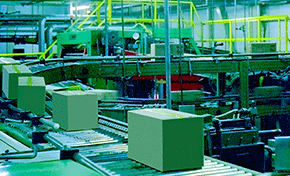PUWER Checklist
These Regulations, often abbreviated to PUWER, place duties on people and companies who own, operate or have control over work equipment. PUWER also places responsibilities on businesses and organisations whose employees use work equipment, whether owned by them or not.
PUWER requires that equipment provided for use at work is:
- suitable for the intended use
- safe for use, maintained in a safe condition and inspected to ensure it is correctly installed and does not subsequently deteriorate
- used only by people who have received adequate information, instruction and training
- accompanied by suitable health and safety measures, such as protective devices and controls. These will normally include emergency stop devices, adequate means of isolation from sources of energy, clearly visible markings and warning devices.
 Work equipment is any machinery, appliance, apparatus, tool or installation for use at work (whether exclusively or not). The scope of work equipment is therefore very wide. The use of work equipment is also widely interpreted and means ‘any activity involving work equipment and includes starting, stopping, programming, setting, transporting, repairing, modifying, maintaining, servicing and cleaning’. Generally PUWER assessments are carried out on machinery used in the workplace.
Work equipment is any machinery, appliance, apparatus, tool or installation for use at work (whether exclusively or not). The scope of work equipment is therefore very wide. The use of work equipment is also widely interpreted and means ‘any activity involving work equipment and includes starting, stopping, programming, setting, transporting, repairing, modifying, maintaining, servicing and cleaning’. Generally PUWER assessments are carried out on machinery used in the workplace.
COMPLIANCE Risk Software is designed to allow reports to be created by addressing each of the Regulations, making a statement about how it complies, or is not applicable, or carrying out a risk assessment where actions are required. Photographs can be added to comments to demonstrate compliance, and can also be added to show Before and After to demonstrate that work has been carried out. Reports are available for Checklists and Risk Report, which allows Action Plans to be developed for any rework.
PUWER applies to all machinery, including new machinery. Regulation 10 of PUWER states every employer shall ensure that an item of work equipment conforms at all times with any essential requirements, other than requirements which, at the time of its being first supplied or put into service in any place in which these Regulations apply, did not apply to work equipment of its type.
It is important to ensure that when purchasing new machinery that it complies with the requirements of relevant Directives. (See CE Audit page).
Ready to dive in?
Start your free trial today.
Experience for yourself our checklist based approach to machinery safety